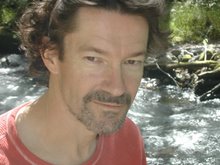Phone calls to the department desperately seeking Aylwin Forbes have subsided for the time being. Being really something of a neophyte when it comes to the Internet, despite my life-long career in the research and development of new technology, little did I suspect that, when I began my ever-so-slightly self-indulgent online diary (blog I suppose the term is in this cyber age), the typing of a couple of words like cold and fusion in juxtaposition would awaken responses around the globe. It is slightly redolent of that story in chaos theory about the beating of a butterfly’s wings in Brazil creating a hurricane in New Orleans or some such. I have learned that there are things called “alerts” which you can use to track down any item that is published containing those terms of interest.
What began as a bit of a whimsical reminisce prompted by the Tribune article on Pons and Fleischmann (PundF) has led to an extensive dialog with some folks more than active in the CF field. Will I have to about face again now I am confronted with new intelligence? The SSCP always likes tell students that a characteristic of the scientist is the ability to modify his thinking based on new evidence. In reality, this is often much easier to say than do. I like to use the example of Dalton, the collector of rainwater and fabricator of atomic theories, and the problem of the formula of water. Nowadays the issue of molecular formula is utterly trivial since we are in possession of our table of atomic weights. Before the atomic world was clarified, before the atomic weights were amassed, the compositions of substances could only be speculated upon. There was the rather telling evidence that elements seemed to combine in fixed weight ratios; but that alone could not inform as to the atom ratios of each element involved. Dalton adhered to the doctrine of simplicity which was prominent at the time. It was known that water contained both hydrogen and oxygen. Dalton proposed there was one atom of each element in the molecule. Gay Lussac’s experiments with gas volumes clearly discredited this view. According to form, the scientist would modify his thinking and accept that, if anything, the experimental evidence was strongly suggestive of a hydrogen:oxygen ratio of 2. Dalton did not. Instead he attacked the credibility of the experiments. His influence was such that Avogadro's important contributions to the matter were largely ignored for forty years.
The scientific community likes to think it has grown up since then and those sorts of things no longer happen. That is largely true, but perhaps not universally so. Scientific organizations and scientific publications can wield great power and often in a monolithic fashion. Just observe how the vaunted National Science Foundation lurches from one big thing to another. Scientists out of step with this knowledge-seeking ocean liner will get water logged. After the initial fiasco, the words cold and fusion could not be uttered in polite scientific society. Those that did would be dismissed as frauds or nutters, just as I did indeed dismiss them. That reaction at that time was probably reasonably justified. Nonetheless, as I am beginning to learn after my long hiatus, within this small community that has refused to slip gently into its good night, something seems to be keeping them going; and in many cases it is neither fame nor fortune, but simply curiosity and unquenchable belief. Is there really something with all the heat and everything else so painstakingly measured? Plans even for commercialization brew, D2Fusion not withstanding. Regaining acceptance into the scientific community though is difficult and will be slow. Latter day Daltons largely rule the roost. I guess I have some more reading to do.
Scienceblogs is shutting down
8 years ago





No comments:
Post a Comment